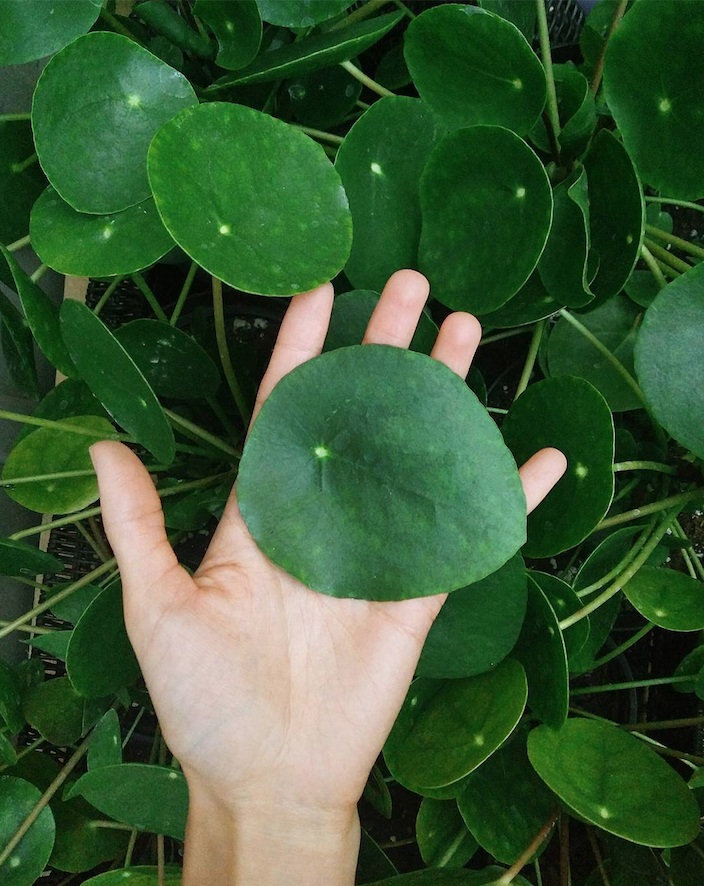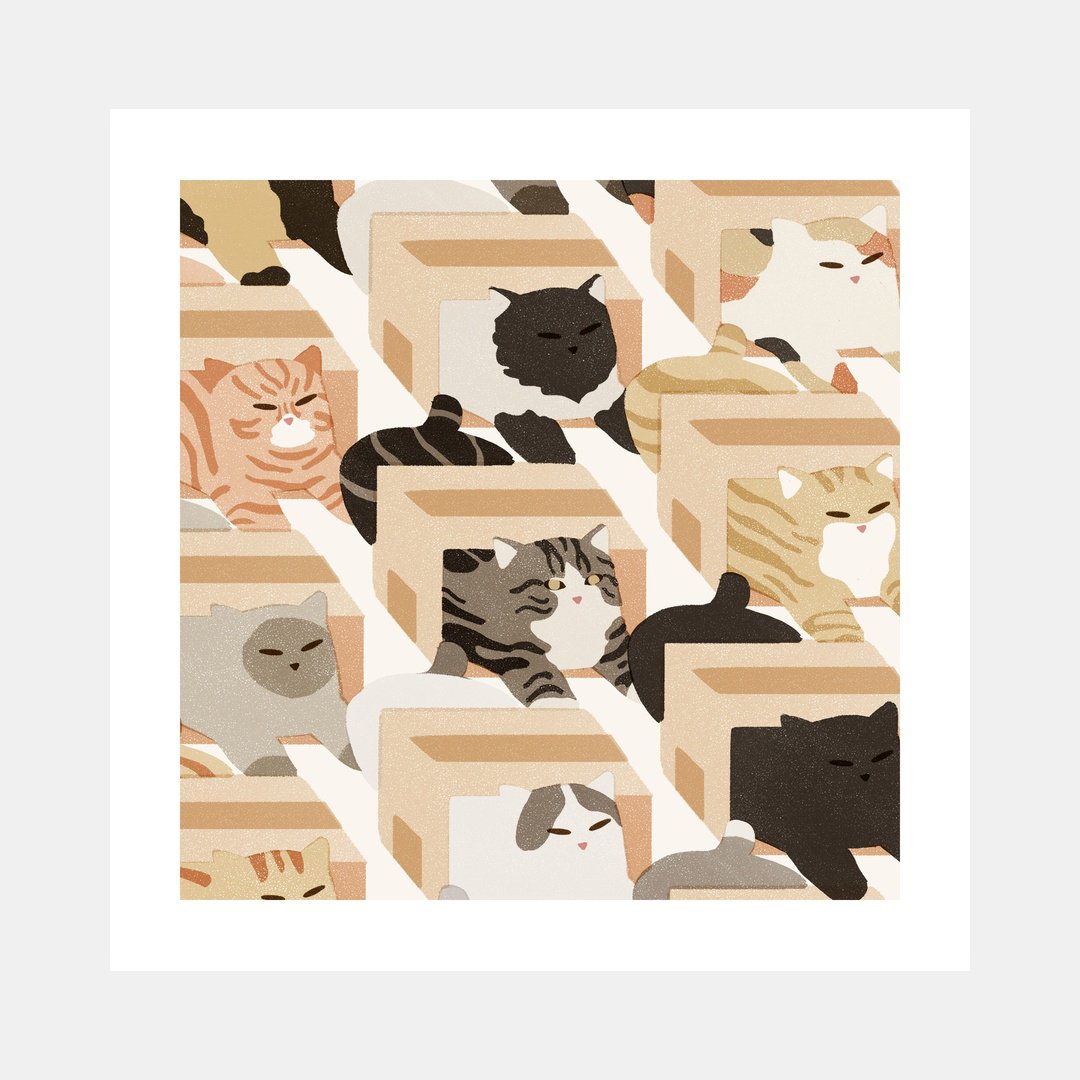Pilea Peperomioides - Care
Source: @studioplants
Pilea peperomioides is the quirky plant with pancake shaped leaves that is strangely rare in some places and abundant in others.
P. peperomioides have taken Instagram by storm, and what was hard to find in Toronto is now seen at many nursery locations and boutiques across the city. On average, you'll be paying $10-15 for a 4" pot: just a year ago you'd easily find them for double that.
The Story
Brought to Norway from Yunnan, the "Chinese Money Plant" spread across Scandinavia like wildfire simply by cuttings given amongst amateur plant enthusiasts. Although it's become a common houseplant, P. peperomioides is still fairly scientifically unknown to botanists.
Plant Care
LIGHT:
Even bright indirect light with some hours of early-day direct light.
WATERING:
Allow drying out inbetween watering. Not particulately sensitive to humidity.
TEMPERATURE:
Above 15°C, not frost tolerant.
SOIL:
All-purpose potting mix.
Growth & Fertilizing
Pilea peperomioides grow quickly if given adequate light - mine almost doubles in size every year. If you want to encourage fast growth, repot by an additional 1-2" diameter pot or be sure to fertilize regularly (full strength, as directed on the package).
Fertilizing:
I consider these plants heavy feeders and have personally used a balanced synthetic fertilizer with great success. Synthetics allow for the plant to draw up nutrients immediately, and is particularly wise to use when you're experience rapid leaf drop during specific periods where the plant is using a lot of nutrients for pups (also see "Troubleshooting" below). Alternatively, you can use organic. If your pilea growth is just steady, you can use a slow release fertilizer, or amend the soil with worm castings.
2016
Original nursery pot in a decorative cachepot. I bought 'Mama Pilea' when she was at full maturity with little babies along the base. Age unknown.
2017
Repotted to a bigger terracotta pot. Regular cuttings were being taken now. At this point, she'd lost many lower leaves but remained short enough to keep upright on her own.
2018
Dramatic lower leaf loss with age meant a top-heavy plant: 'Mama Pilea' was staked with a metal rod and clips along her main stem.
How to Get Flat Leaves
Brighter Light:
I've seen a lot of people experience domed or curved leaves on their pilea peperomioides. Oftentimes its because of insufficient light. Leaves curling inwards is usually a sign of a plant attempting to maximize their exposed surface area to light for photosynthesis.
P. peperomioides, are commonly said to not like direct sun. I think what people actually mean is that they don't like "full sun" (meaning 6-12 hours of direct sun), not that it doesn't like direct sun at all. It's definitely not a low-light plant. They can handle a couple hours of direct light, especially sheltered indoors. Mine are infront of a south-facing window all year long.
My theory to getting flat leaves is not only bright light, but: bright evenly diffused, overhead light. We don't all have skylights so what also helps is ...
No Rotation:
When a pilea peperomioides sits on or by a sill only one side of the plant is illuminated with the other half shaded. This causes those shaded back leaves to dome to try and receive more sunlight. We rectify this by rotating the plant but actually, rotating your pilea is perpetually making your plant “chase the light” so the doming is constant throughout the plant to some degree.
Instead, allow your pilea peperomioides to sit undisturbed where all the leaves can adjust to one side. This often means you'll have one naked backside, but without overhead lighting, this is about as realistically compact many indoor pilea will get.
Hacks
Tentatively named to describe ways you can achieve a certain look with your P. peperomioides. No one will look the same within each home as they are so light sensitive and reactive. Know that viral pilea photos you see can appear differently than yours. Here are three common reasons why they may look the way they do:
"Lush and Full"
Is achieved by keeping multiple plants in one pot: either by not removing the babies or planting multiple cuttings together. Pilea don't branch out by the main trunk so to achieve a "bowl" of pilea peperomioides of your own, you need multiple plants.
"Full Frontal"
This is where all the leaves face one side, flattening out in graphic circular elegance befitting of an iconic illustration. This is achieved by not rotating your plant. Theory mentioned above.
"Straight Stem"
The P. peperomioides main stem naturally curves downwards as the plant becomes top-heavy with age. Mature plants that are perfectly straight have been supported with a stake.
Taking Cuttings
Pilea peperomioides are able to root all along their stem: the tiny notches you see are nodes that are ready to sprout. You may even see babies grow directly on the main trunk and yes, they will grow to full maturity but at a much slower rate than a runner under the soil.
Runners:
Cutting away pilea babies sprouted from a runner beneath the soil is the most common method of propagation. Wait until the pup is atleast 2-3" tall, then make a clean cut with atleast an additional 1" of bare stem. Bury this stem in moist soil and maintain until rooted.
If needed, pluck the lower leaves to allow a deeper bury.
What about Single leaves?
Typically, the petiole of the P. peperomioides does not contain the tissue needed to grow full size plants. You may get rooting after a long, long wait however.
Troubleshooting
Yellowing leaves at Base
Followed by leaf drop. This is natural leaf shedding but if it is happening very rapidly: fertilize your plant and ensure adequate lighting.
Yellow of Overall Plant
Too much direct sun (unlikely indoors) or too much water. Reposition or allow drying out inbetween.
Tiny domed new leaves
Your plant could be stretching for light or you are fertilizing it too much, encouraging too rapid of a growth.
Brown Spots
If uniformly coloured, is simply an old leaf naturally browning and eventually crisping off.
Blotchy Brown Spots
Can be a fungal disease. Often if plucked, the plant grows as normal and eventually recovers.
White Spots
White dots along the pore of the leaves are minerals being secreted out. This happens often with tap water.
Curling Leaves (Outwards)
Lack of light: see "How To Get Flat Leaves" above.
Curling Leaves (Inwards)
Is often because of high heat. Bring your indoor temperature down, or move your plant away from the heat source.
Curled Leaves falling Off:
If the petiole or stem also very limp, it's from over-watering with possible root rot. Dig up plant and allow roots to dry out and replant. Make sure you aren't burying the crown too deep into the soil.
Pilea peperomioides are very much a sharing plant! If treated right, you will be swarmed with young pups ready to be gifted to a friend where you can add yourself as one other cast member to the legacy of this mysterious plant.
Support my Work by Purchasing an Art Print!
Related Posts:





















Spa day for your plants: the benefits of giving your houseplants a shower.